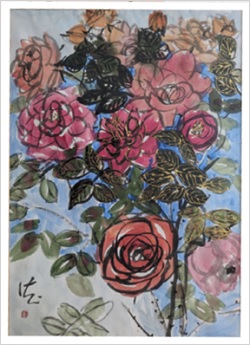In my bedroom, there is a painting of roses which was given to me by a family friend as a housewarming gift. In vivid brushstrokes, the artist painted pink and peach roses, contrasting nicely with a background in various shades of blue. I was told by my family friend, a retired nurse, that its artist was none other than Dr Earl Lu.

Dr Lu was a prominent general surgeon, art collector and painter. He had a passion for painting roses, and he often presented his paintings for sale at fundraising exhibitions.1 He also generously gave paintings to nurses as tokens of appreciation,2 which was how my family friend acquired some of his artworks. I did not have the opportunity to meet Dr Lu, nor do I have a talent for drawing or painting. However, I do know of other doctors who like to paint as a hobby and interestingly, many of them are surgeons too.
I did not take much interest in art in my younger years, preferring the sciences. Like most doctors of my generation, I did triple sciences (Biology, Chemistry and Physics) for both my O- and A-Levels. The subjects that we covered in medical school were understandably entirely science based. The only exposure that I had to the arts then was through the National University of Singapore (NUS) Playhouse – an annual competition in which NUS medical students across all five years of study competed to see who could put up the best (and funniest) play.
I have since realised that medicine is both a science and an art. The scientific aspect of medicine is based on medical knowledge and research, but the art of medicine encompasses how doctors diagnose, explore treatment options, communicate and promote healing.
Nowadays, I prefer going to the art museum rather than the science museum; there is something about the arts that uplifts the soul, and reflecting on a good piece of art helps me to understand the various aspects of the human condition. Even though I am not capable of producing a beautiful artwork like Dr Lu, I can certainly still benefit by appreciating art.
Engaging in art may aid in personal development. This need not be confined to the visual arts, but extends also to music, acting and literature. Incorporating the arts in medical education may help produce more well-rounded doctors. The Association of American Medical Colleges states that "[t]he integration of the arts and humanities into medicine and medical education may be essential to educating a physician workforce that can effectively contribute to optimal health care outcomes for patients and communities".3
This issue of SMA News places focus on doctors and the arts, and I hope it inspires you to begin your own journey into the arts.